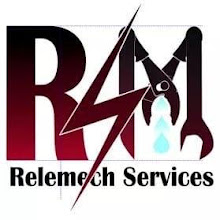Closed-loop, or indirect, systems use a non-freezing liquid to transfer heat from the sun to water in a storage tank. The sun's thermal energy heats the fluid in the solar collectors. Then, this fluid passes through a heat exchanger in the storage tank, transferring the heat to the water. The non-freezing fluid then cycles back to the collectors. These systems make sense in freezing climates.
Pumps circulate a non-toxic, heat-transfer fluid (HTF) through the collectors and a heat exchanger. They are popular in climates prone to consistent freezing temperatures.
These systems pump heat-transfer fluids (usually an FDA approved glycol fluid) through collectors. Heat exchangers transfer the heat from the fluid to the household water stored in the tanks. Closed-loop glycol systems offer good freeze protection. However, the glycol must be checked each year and changed every 3 to 10 years, depending on glycol quality and system temperatures.
They are generally more complicated than an open direct loop system, because either a tank with a heat exchange coil or an external heat exchanger is required. As a heat exchanger is required the collector loop will run at slightly higher temperatures than an open loop system. The collector loop needs to be pressurized(8 -12 psi).
The antifreeze may need to be recharged on a 3 to 5 year basis.
Advantages of a Closed Loop
Closed Loop system allows simple switching between heat exchangers for multiple applications, as well as excellent freeze protection. Special solar domestic hot water tanks are available with internal heat exchangers (coils), with or without electric backup. Twin coil tanks are also available that allow surplus solar energy to be directed to spa, pool, floor etc. The top coil can also be connected to the house boiler as a DHW backup. No freeze sensors or drain down valves are necessary.
Disadvantages of a Closed Loop
It is generally more complicated than an open loop system, because either a tank with a heat exchange coil or an external heat exchanger is required. As a heat exchanger is required the collector loop will run at slightly higher temperatures than an open loop system. The collector loop needs to be pressurized. (8 -12 psi) The antifreeze may need to be recharged on a 3 to 5 year basis.
The antifreeze may need to be recharged on a 3 to 5 year basis.
Advantages of a Closed Loop
Closed Loop system allows simple switching between heat exchangers for multiple applications, as well as excellent freeze protection. Special solar domestic hot water tanks are available with internal heat exchangers (coils), with or without electric backup. Twin coil tanks are also available that allow surplus solar energy to be directed to spa, pool, floor etc. The top coil can also be connected to the house boiler as a DHW backup. No freeze sensors or drain down valves are necessary.
Disadvantages of a Closed Loop
It is generally more complicated than an open loop system, because either a tank with a heat exchange coil or an external heat exchanger is required. As a heat exchanger is required the collector loop will run at slightly higher temperatures than an open loop system. The collector loop needs to be pressurized. (8 -12 psi) The antifreeze may need to be recharged on a 3 to 5 year basis.












